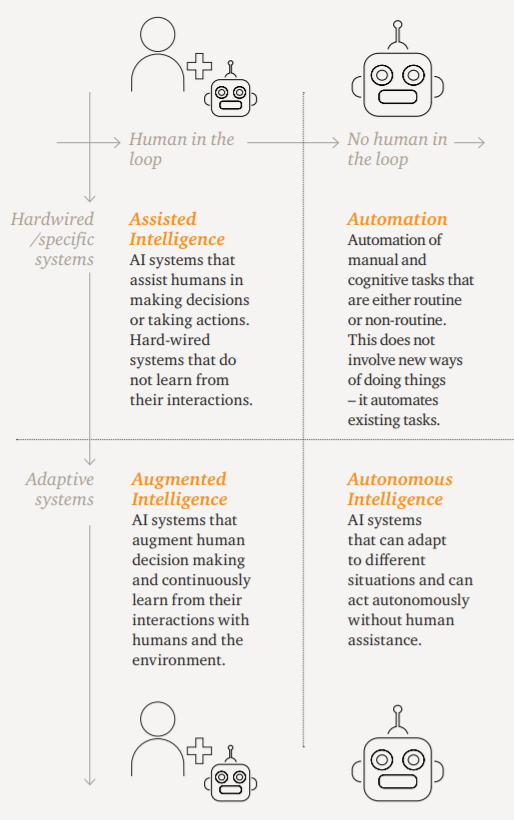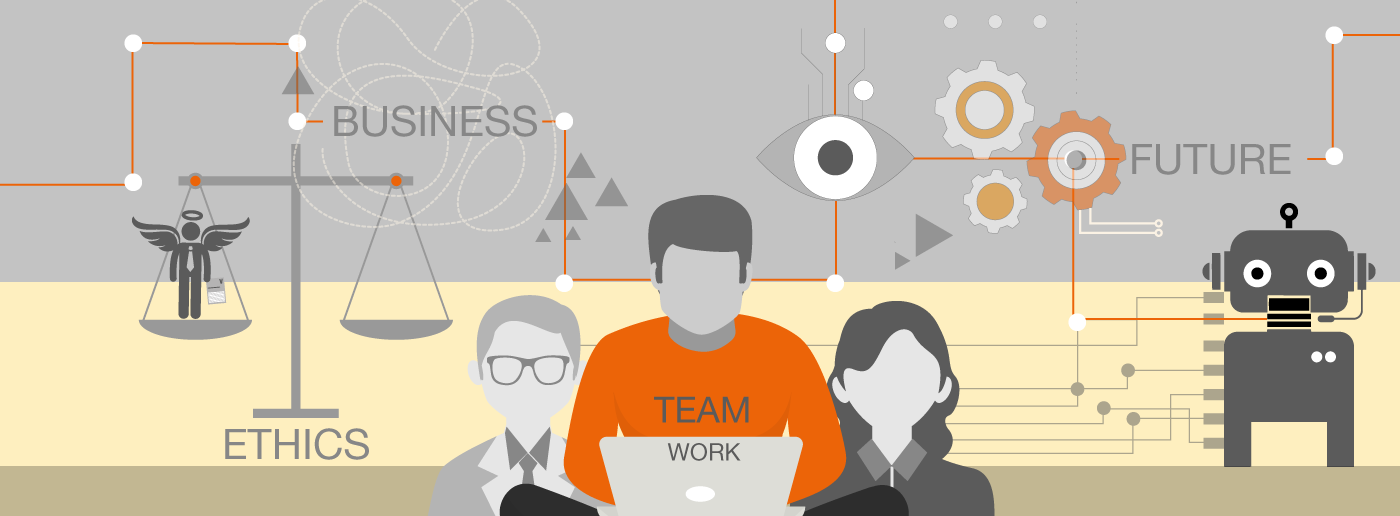Some weeks ago, we had the opportunity to exchange views on what the rise of artificial intelligence (AI) means to business and society, threats and advantages, and the value it’s already bringing to us. The scenario couldn’t be better: Anand Rao, our global AI leader, visited Crystal Park and shared his reflections, experiences and predictions during the event “Artificial Intelligence: Threat or Opportunity”. The importance of educating correctly people and machines alike was the most powerful idea of the event. To write this article, we reviewed our notes and selected the ones that help you ponder perceptions around AI and the conquest of the world of work. The solution seems to be simple yet requires lobbying and will: the responsible implementation of AI in the business sector.
Is AI a serial job killer?
We all have read digital transformation is pushing industries to rethink the way they do business. In fact, not only processes but decisions are being automated. In a previous blog post we shared with you that AI is a viable solution for businesses to face client demands for faster and customised services. However, the impact automation is having on employment and the potential job destruction it might cause once being more extensively implemented is a growing concern.
During the event Pierre Gramegna, the Luxembourg’s Minister for Finance, addressed this concern by giving the audience an example. Back in the 1950s, there was a similar situation when people started using the great calculators. In the end, these new machines became an important support that optimised both time and work. Additionally, Pierre Gramegna recalled that, two years ago, Jeremy Rifkin estimated 25% of jobs needed in five years weren’t yet known. This suggests AI implementation can be a source of job creation. The Minister finalised his speech inviting people to have a most positive vision of our common future with robots. To start, the construction of an AI framework could guarantee smooth human and machine coexistence.
Though this positive view of our shared future with AI is comforting, calculators functionalities and AI capabilities differ enormously, therefore, the influence they can exert to the work world. Can humans agree on the extent we want our systems and labour world to change because of AI?
AI: Turning the “versus” into a “tag-team”
Anand Rao proposes to business to consider first what they want to use AI for (purpose) and how. It’s a necessary reflective exercise, in fact. To understand the potential of AI in your business, think of all possible applications in the value chain, supply chain and other business processes and functions.
The tweet below shows “The Four Lenses of Artificial Intelligence” frame to help you think of how you can implementing AI in your business:
What do you want to do with AI?
See the four lens @AnandSRao #PwC’s Advisory Partner and Global #AI Leader, suggests to consider when thinking of implementing #ArtificialIntelligence. The #Business lens must be always the #kickstarter. #arpwcl pic.twitter.com/tuLSJwu0Mn— PwC_Luxembourg (@PwC_Luxembourg) 14 March 2018
Put the business in the centre of the exercise. It’s the kickstarter. Then, think of the existing work tools put in place and whether AI solutions can help get results better than the existing ones. For example, streamlining procurement-related tasks, already stepped up the automation game by using chatbots.
What comes next is the decision of the type of AI the business wants to implement for specific tasks. Take into account “independence” level the machine needs to have to properly accomplish the task. The graphic below classifies AI according to capabilities.

It’s key to bear in mind, though, that humans decide what information goes and what doesn’t go into the machine; in other words, what the algorithms or commands ask the machine to do. According to Anand Rao, there is a thin red line between what we can do and what we decide to do. It’s ultimately very much up to each business and how far it wants to go in the robots game.
Selecting the right technological tools is the last piece of the puzzle and essential to ensure the success of the AI in your business. AI-powered applications could be the suitable solution applied to tasks including discovering new data, cleaning and combining it and suggesting new ways of data combinations to uncover new insights. In any case, betting on iteration seems to be the key to unlock the full AI potential and benefits it brings. The ground is new and companies are learning on the go.
How to apply the killer AI benefits?
Anand Rao presented six different views on how to benefit from AI and how these steps build up trust in this quick-developing technology. For your business to uncovered the AI potential, make it AI-friendly. Embracing change hasn’t ever been an easy task and you will likely have to deal with reluctance, disinterest and fear from certain team members. The way companies tackle these situations reflects their take on business responsibility. This is an unmissable opportunity to have a healthy conversation about the type of company your teams want to work for and how they imagine worklife together with machines. It’s a balancing act.
Super presentation of @AnandSRao on the opportunities and threats of #AI @PwC_Luxembourg @pJBusinessClub #arpwcl pic.twitter.com/7fDE69WuzX
— Andy.Nuno (@AndyNuno3) 14 March 2018
As we mention before, we shape AI. It’s a reflection of our knowledge, but with a faster processing capacity and more accuracy. The key to a healthy collaboration with AI is the quality of information we give the machines, what mandates tasks we want them to perform and what role we play in the business process. On this regard, being fully aware of regulatory compliance, ethics, inclusion and other considerations are crucial to ensure the responsible use of AI.
The aim is responsible AI
Much of the undergoing discussion about AI and the negative impact it may exert to society comes down to education and responsibility. As Anand Rao suggested to the audience, it comes down to teaching the right people the right way to educate AI. Humans are biased, how do we make sure machines aren’t?
Government has a key role to balance the opportunities and risks of #AI. It needs to intervene for people to trust #data. AI is the Front-end, offering real services but people need to trust the data it’s fed with. @AnandSRao #arpwcl #ArtificialInteligence
— PwC_Luxembourg (@PwC_Luxembourg) 14 March 2018
As we described in our article on unbiased chatbots, it’s very unlikely that a machine can be completely unbiased, since it’s fed with information we provide. We think a broad, multilateral discussion platform where businesses, government, regulators and society share ideas on what future we imagine together with AI can help make the most of this promising technology, with better benefits for all.


